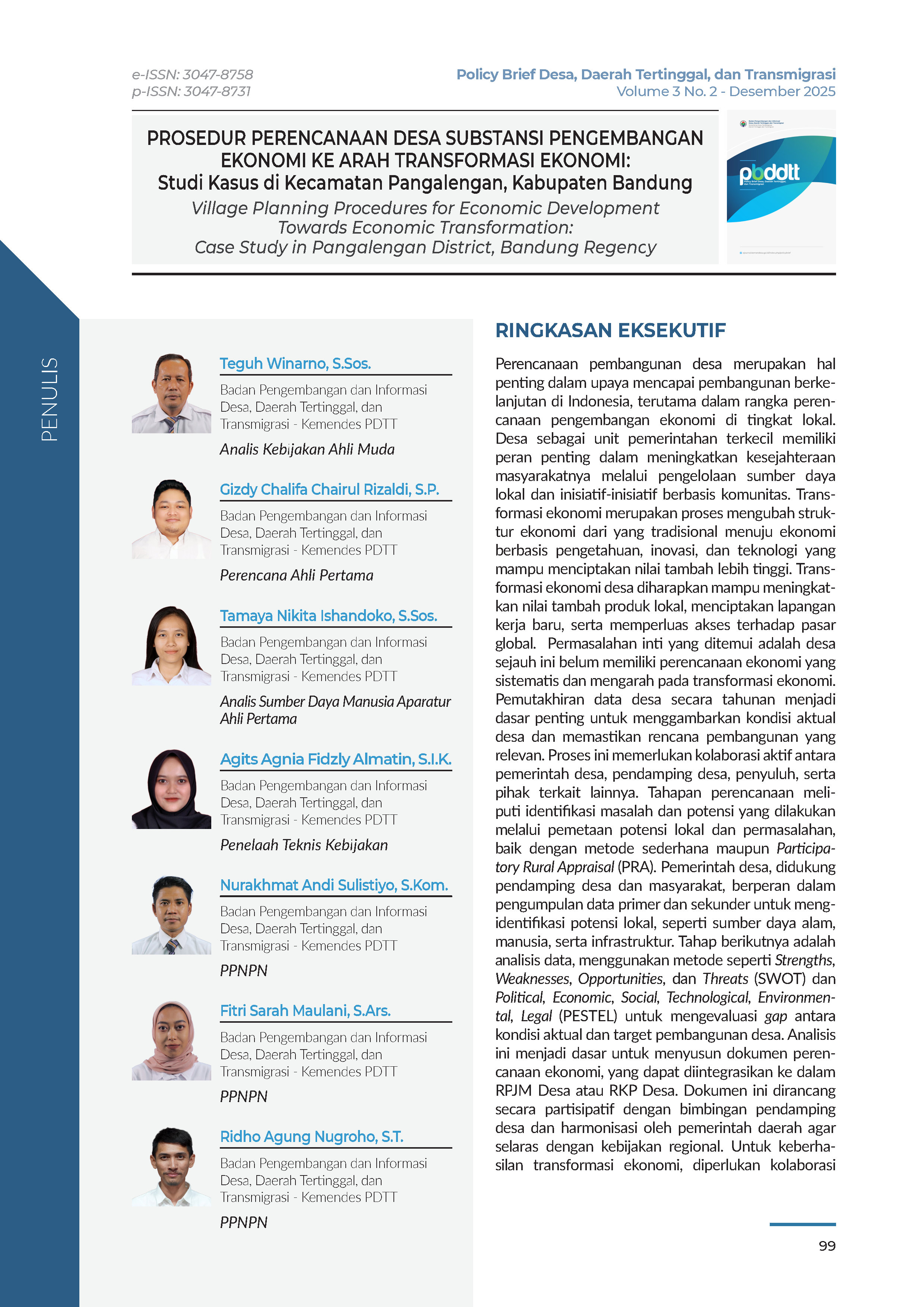Village Planning Procedures for Economic Development Towards Economic Transformation
Case Study in Pangalengan District, Bandung Regency
Keywords:
downstreaming, economic transformation, innovation, labor, village planningAbstract
Village Development Planning is important to achieve continuous development in Indonesia, especially in the context of economic development planning at the local level. The village, as the smallest unit of government, plays an important role in improving the welfare of its community through the management of local resources and community-based initiatives. Economic transformation is the process of changing the economic structure from traditional to knowledge-based, innovation, and technology-driven economies that can create higher added value. Village economic transformation is expected to increase the added value of local products, create new job opportunities, and expand access to global markets. The core issue encountered is so far, villages do not have systematic economic planning that is directed towards economic transformation. Annual updates of village data are essential to depict the actual conditions of the village and ensure relevant development plans. This process requires active collaboration between village governments, village facilitators, advisors, and other related parties. The planning stages include identifying problems and potentials through mapping local potentials and issues, using both simple methods and Participatory Rural Appraisal (PRA). The village government, supported by village facilitators and the community, plays a role in collecting primary and secondary data to identify local potentials, such as natural resources, human resources, and infrastructure. The next stage is data analysis, using methods such as Strengths, Weaknesses, Opportunities, and Threats (SWOT) and Political, Economic, Social, Technological, Environmental, Legal (PESTEL) to evaluate the gap between actual conditions and village development targets. This analysis forms the basis for preparing economic planning documents, which can be integrated into the Village Medium-Term Development Plan (RPJM Desa) or the Village Government Work Plan (RKP Desa). These documents are designed participatively with guidance from village facilitators and harmonized by regional governments to align with regional policies. For successful economic transformation, cross-sector collaboration, supportive policies, and specific approaches tailored to village characteristics, such as economic diversification and downstream processing, are required. The village government leads the preparation of documents that reflect the vision of economic development based on local potentials.
Downloads


